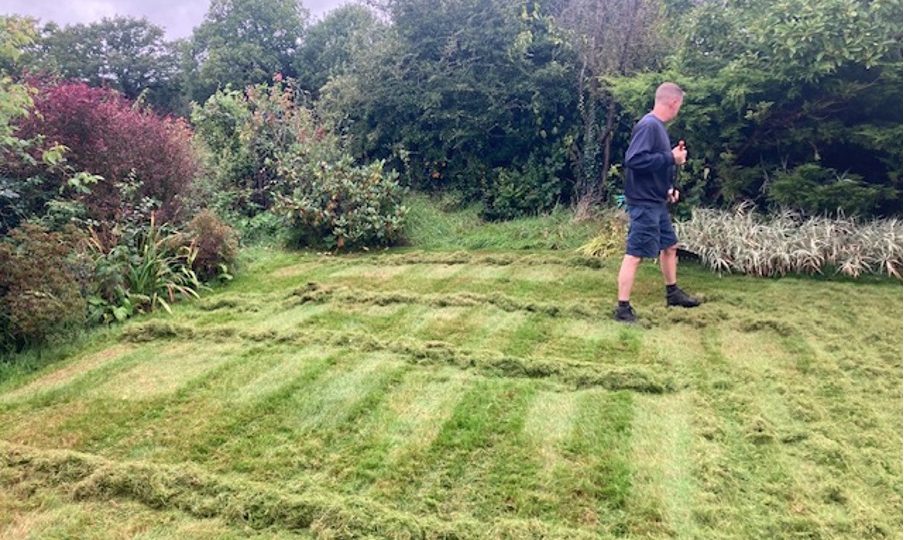This is our first blog of 2025-well, the first ever to be honest. One of the questions which many of our customers will be thinking about at this time of year, is why do I keep getting moss in my lawn? There is no one answer to this, but here are some of the reasons (and solutions) to inform you.
Moss is a common lawn problem. It is impossible to eradicate it for good, but there are lots of things that can be done to keep it in check, so that you can make your lawns a less favourable place for moss to set up home in the first place!!! Moss enjoys growing on nutrient deficient soils-you can help your soil to be less of an attraction by feeding your grass and roots-(please see our range of services) and by relieving compaction (compaction is when the soil is squeezed tightly together). Moss loves wet and shady conditions, so if your lawns stay very wet due to an inability to drain, or are shady due to overhanging shrubs or branches, you can help by aerating your lawns and by cutting back vegetation. Never, ever, leave piles of leaves sitting on the lawn-this will make the turf stay wet (which moss loves) plus will cause shade (which moss also loves). Leaving leaves in one spot for long periods can make the grass very stressed-it will turn yellow and may die off completely.
We offer an aeration service. We use a machine which punches and removes cores of soil. This allows water and air down into the soil and will allow grass roots to grow stronger.
Moss also loves to grow on thatch; thatch is a springy layer of dead material, such as the sideways growth of the grass, old leaves, old grass clipping etc. If you have a lot of thatch, then your lawns may feel springy when you walk on them. We have stepped on lawns that are so full of thatch that you can see our footprints after we have walked over them. You can remove thatch by scarifying your lawns. We use machine scarifiers to do this successfully in Autumn or Spring. However, if you only have a little thatch, you can help by gently raking your lawns with a metal lawn rake.
Even after you have aerated and scarified your lawn, moss will always be on the look out to return. We offer two treatment services that will target and kill moss present on the day. Our ‘Autumn/Winter’ treatment is an application of liquid iron. This works to dehydrate the moss and helps to strengthen the turf. This will turn moss present a dark colour and you can then remove this by gently raking with a metal lawn rake. We also offer another specific moss treatment later in the winter to target any moss that may have formed in what is likely to be the wettest, darkest period of the year (Winter’s End treatment). We can also add a moss control to our other treatments upon request for an additional charge, although we don’t recommend targeting moss in the summer.
Did you know that the way you cut your lawn can make a difference to moss? Never, ever ‘scalp’ your lawn – that means cutting it too short. Your grass will become stressed if cut too short – moss loves to wait for a weak plant – it will take advantage of poor grass to take over.
A good lawn maintenance problem is the best way to keep moss under control.
The photo below shows one of our customer’s lawns before we had started any treatment. Our customer is no longer able to look after the lawn herself, and had a gardener who had attempted to treat the moss himself resulting in the dark areas in the pictures. Sadly, he had applied too much of an over the counter moss killer and had actually killed the grass beneath the dark areas. This lawn was incredibly springy and thick with both moss and thatch. The poor gardener was struggling to mow the lawn as his mower sank into the thick layer of thatch.
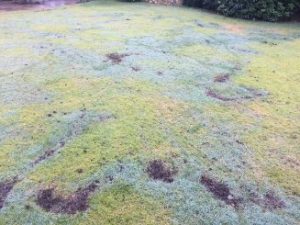
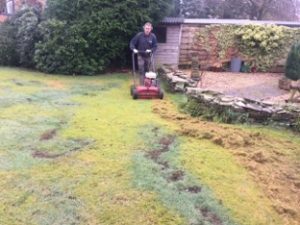
Here is David beginning scarification
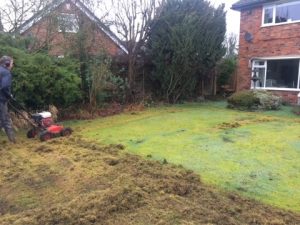
Care is always taken not to remove too much – vigorous scarification can leave bare patches – not what paying customers want to see. A gradual approach is what was needed for this lawn. By removing the thatch and feeding the lawn, moss then became a distance memory.
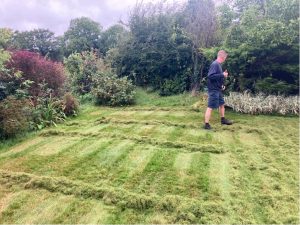
The same lawn two years later.
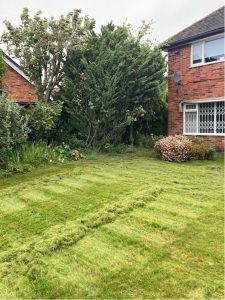
Piled up thatch ready for bagging. A quick run over this lawn with the mower, and it is then ready for the coming winter.
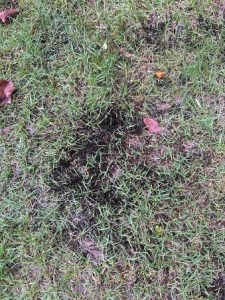
This photograph shows our own lawn 3 weeks after we had treated the moss. We are now waiting for a drier spell so we can gently rake this away.
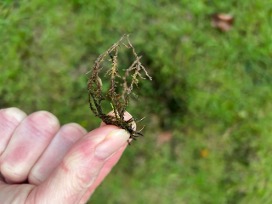
Treated moss-simply rake to remove.
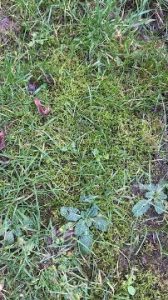
A good example of moss growing on very wet, heavy clay compacted soil. This area of untreated lawn had plants growing over the area too, creating shade. To remedy this, we would recommend feeding the lawns, aerating and moss control. This particular area of lawn is fairly sparse, so reseeding in the spring will be required after the moss is killed and removed.

